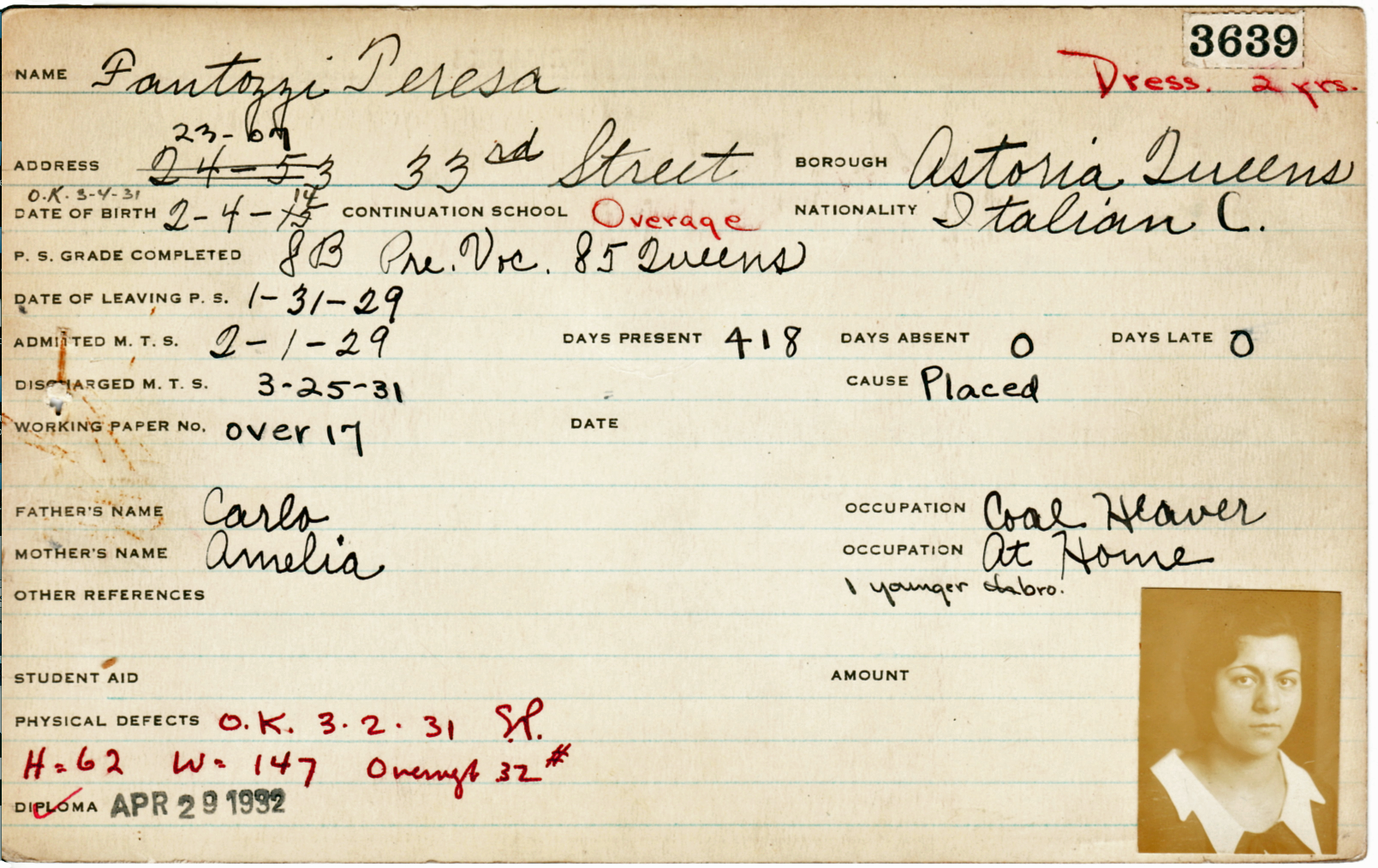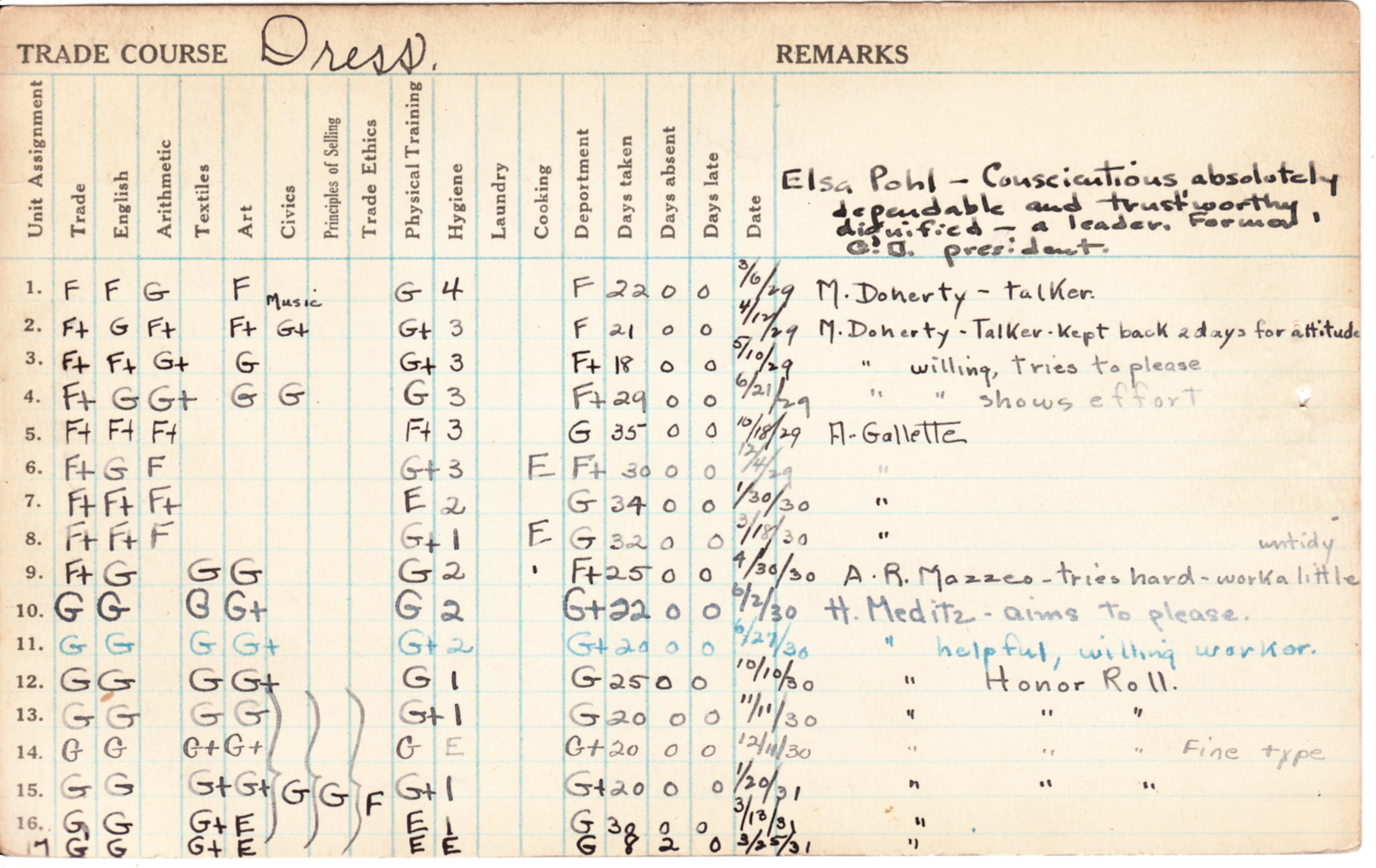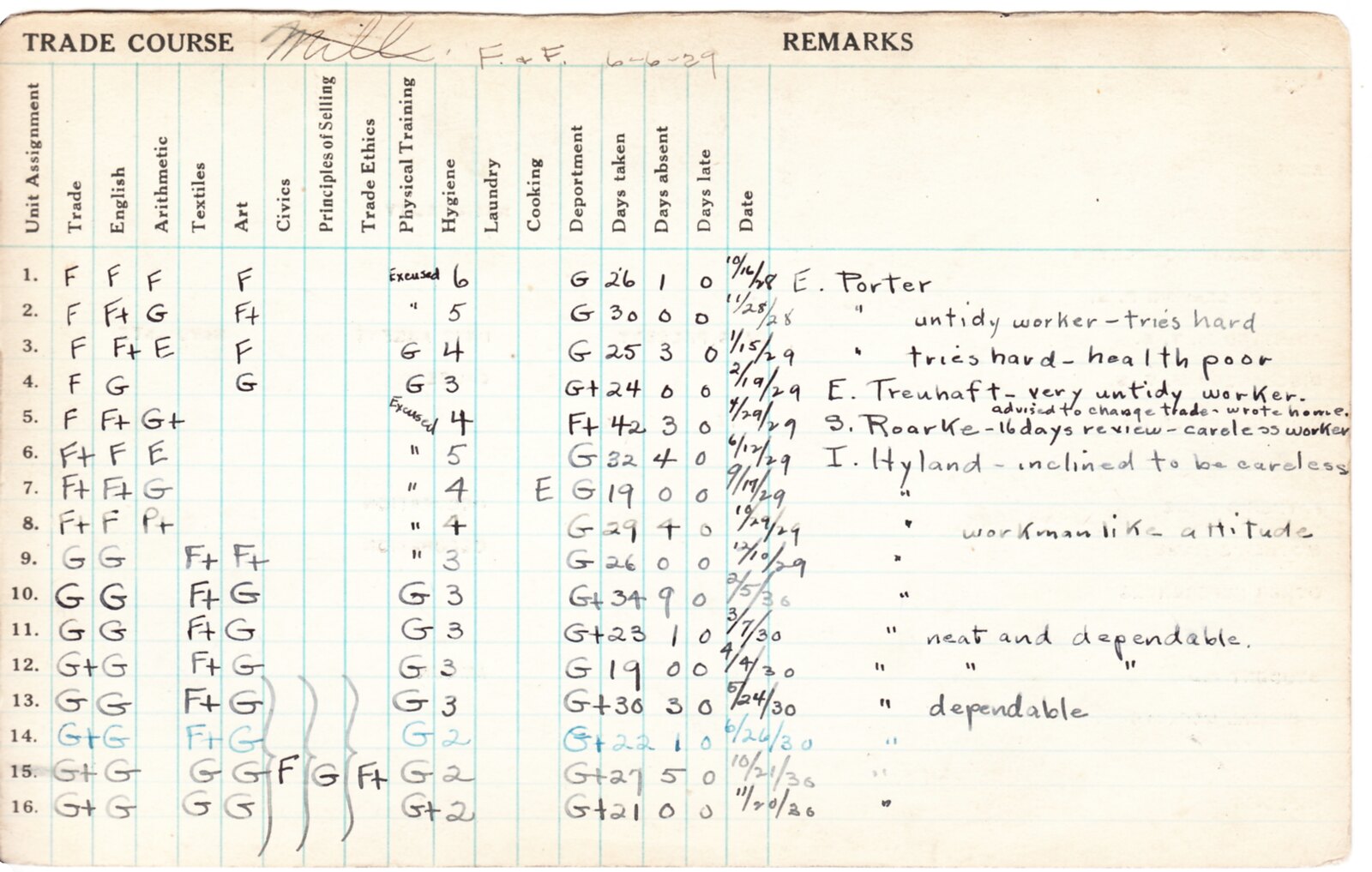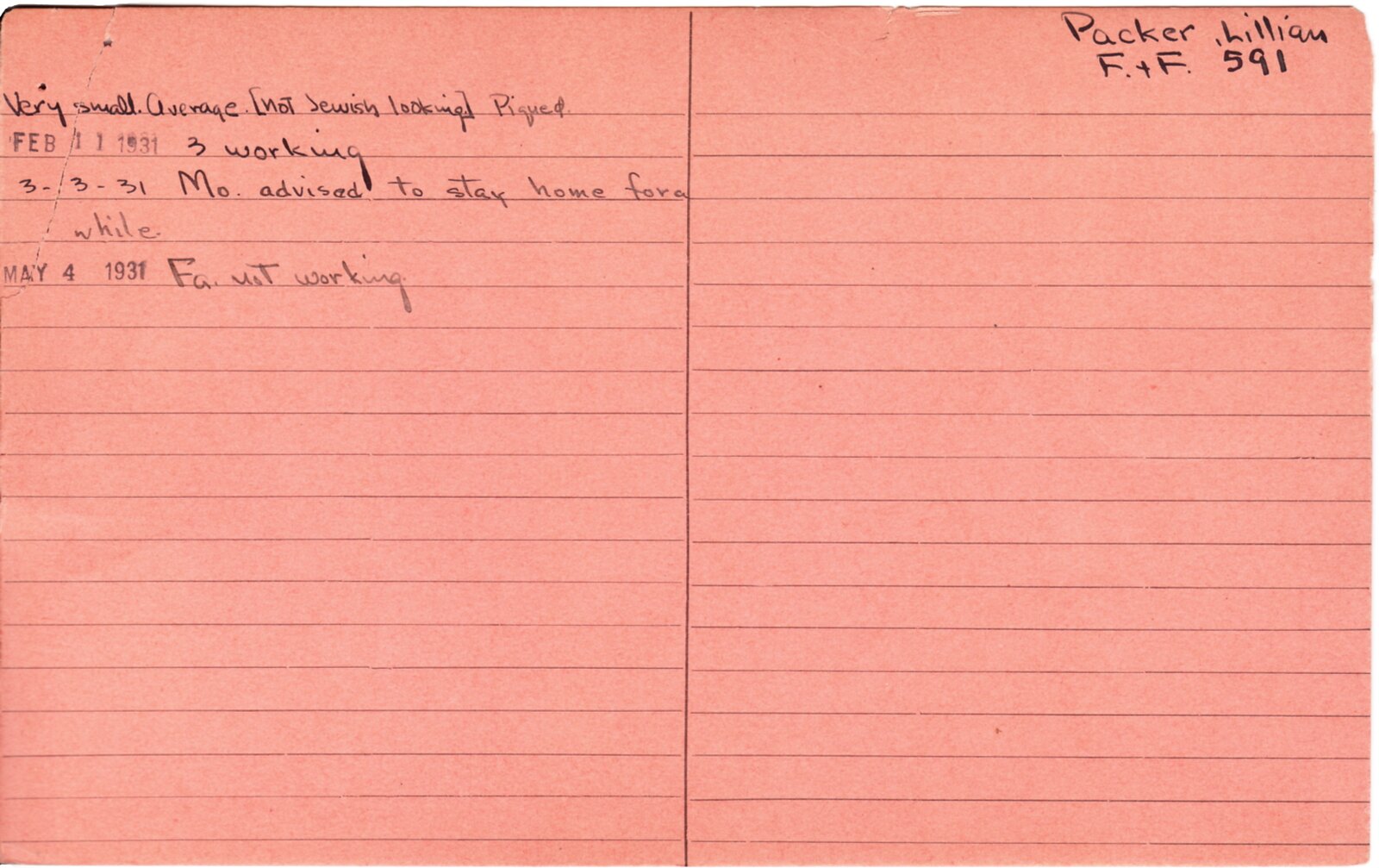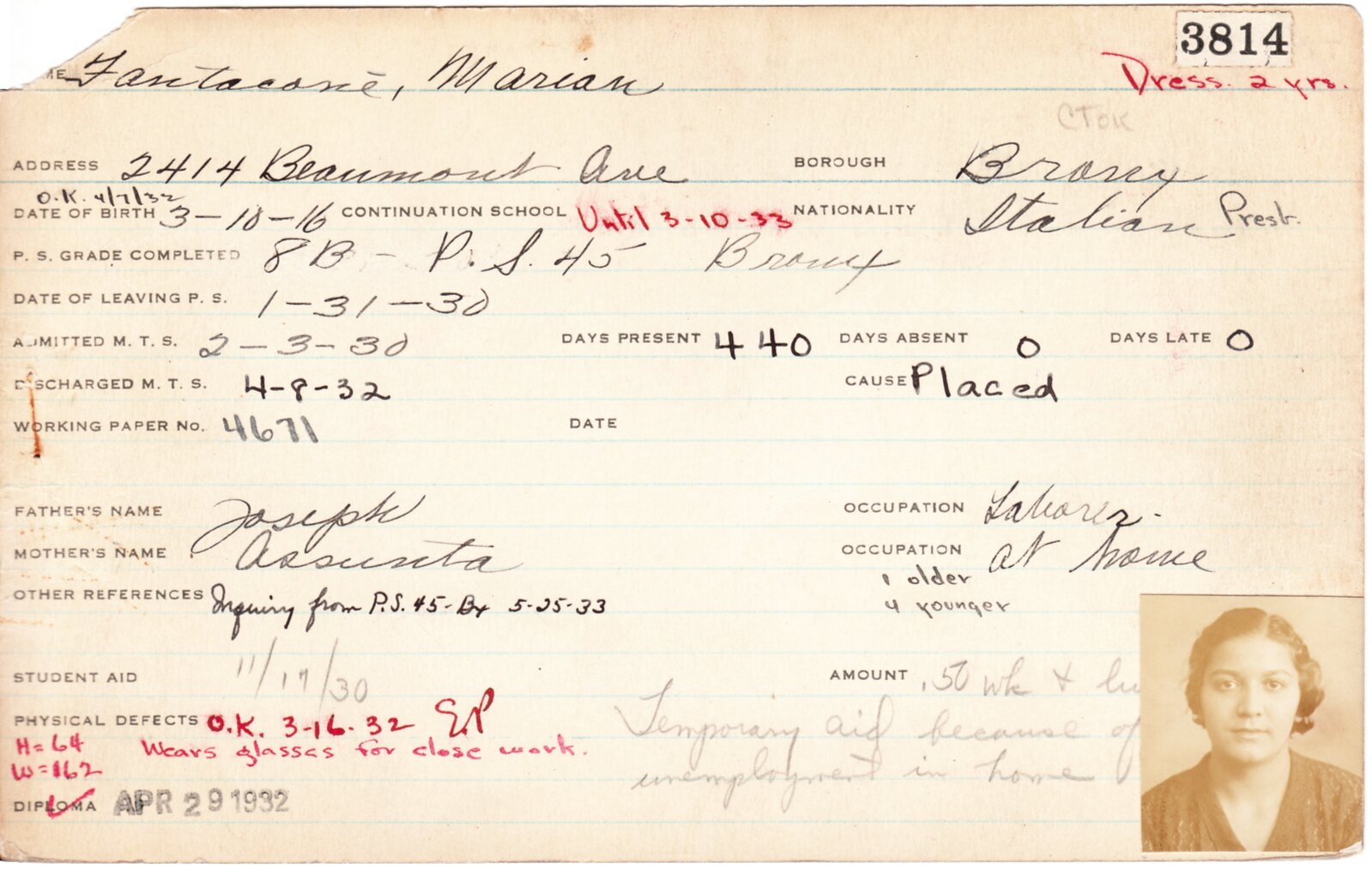
For all documents, click to enlarge
This week we're examining the record of Marian Fantacone, an Italian-American dressmaking student who lived in the Bronx and attended the Manhattan Trade School for Girls in the early 1930s. She was born in March of 1916, which means she's closing in on her 99th birthday if she's still alive. The spelling of her first name keeps switching back and forth between "Marian" and "Marion" in her file, but I'm going to go with Marian, because that's how it's listed on her primary card, which is shown above.
A note next to Marian's photo says, "Temporary aid because of unemployment in home." We'll learn more details about this shortly.
Marian's grades were generally solid, and her teachers' comments were, on the whole, positive (remember, E = Excellent; G = Good; F = Fair; P = Poor):
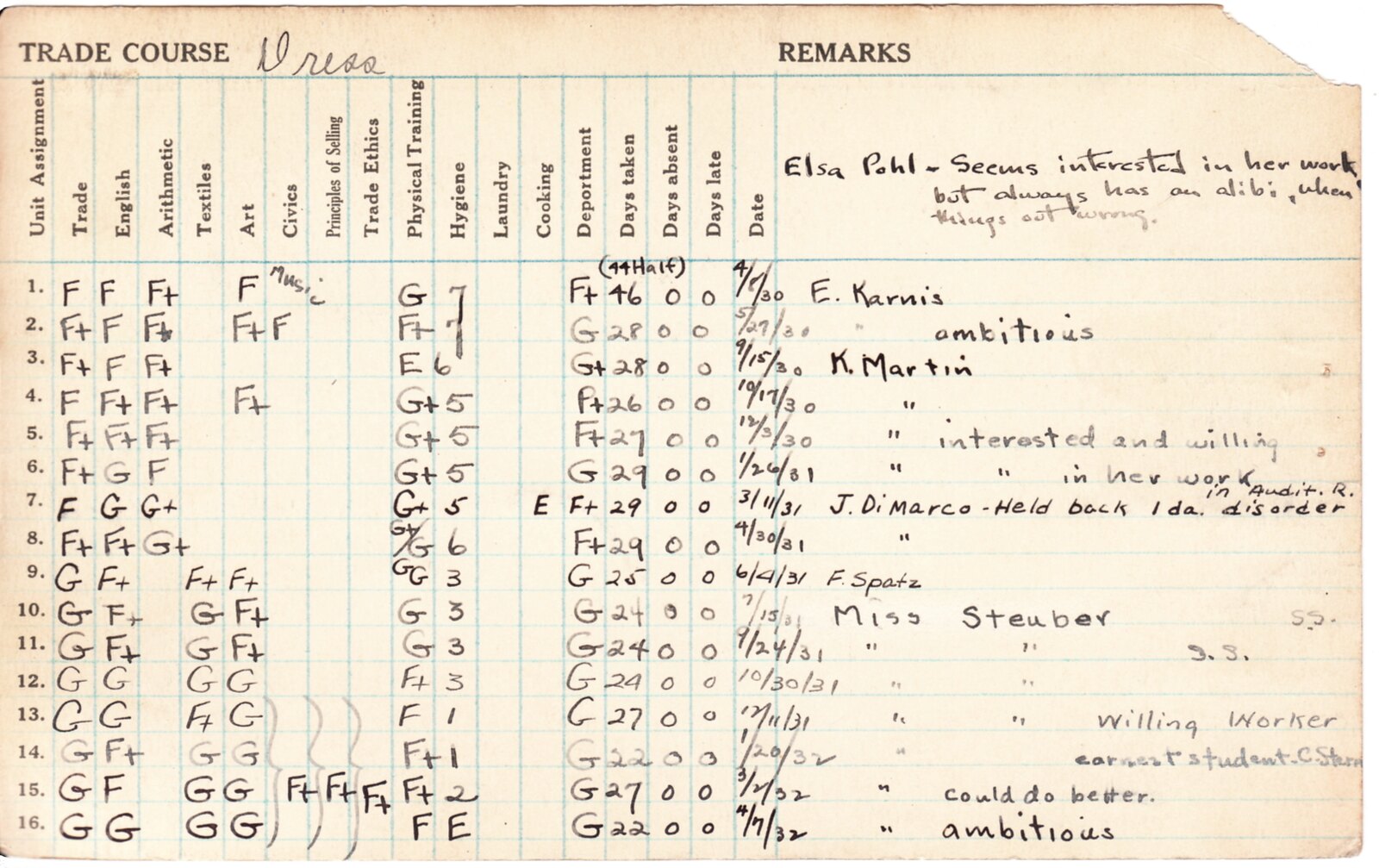
Next we have Marian's financial aid records, beginning with an assessment of her household, which shows that she was the second-oldest of two children and that her father and older brother -- a bricklayer's helper and a painter, respectively -- were both out of work (not surprising, given that this was in the midst of the Great Depression):

It was standard procedure for the school to make a visit to the home of any student for whom financial aid had been proposed. Here is a school employee's account of the visit to Marian's home:

The report, by a woman named Katherine E. Martin (a name that is not familiar to me from other students' files), reads as follows:
On Wednesday, November 12th, 1930, I visited the home of Marian Fantacone at 2414 Beaumont Ave., Bronx. Mr. Fantacone and his son, who is 19 years old, are out of work. The father has been idle for 2-1/2 months. The son has been doing some painting for the landlord but receives no money for the ob, because two months' rend is owing and the painting is for part payment on the rent, which is $38 per month.
No money is coming into the house. Food is scarce. The grandmother gives what food she can spare.
There are six children, ages 19, 15, 12, 8, 4, 2 years.
The mother is living. Family all in good health.
Their home is very poor and cheerless. They are not receiving any aid from any association.
Marian is in the 5th contract [this refers to the sequence of courses at Manhattan Trade — PL]. Her work is fair, deportment good, has never been absent or tardy.
Her teeth need attention, some to be extracted and cleaned.
Marian was ultimately approved to receive aid for "Carfare and lunches," although the amount of the financial assistance was not specified (that's unusual -- the school was usually meticulous about documenting this type of thing):

Here are some additional notes from Marian's student aid file. These are typed, so I won't bother transcribing them (you can click on the card to see a larger version of it):

The entry from Jan. 6, 1931, referring to a donation from a "Mr. Palmer," is interesting. I'm not sure who this was or what type of donation he made.
Like all the other Manhattan Trade students, Marian was referred for employment by the school's job placement office. Here's her work record, which shows that the school found jobs for her, primarily as a dress finisher ("fin."), for several years after her 1932 graduation:
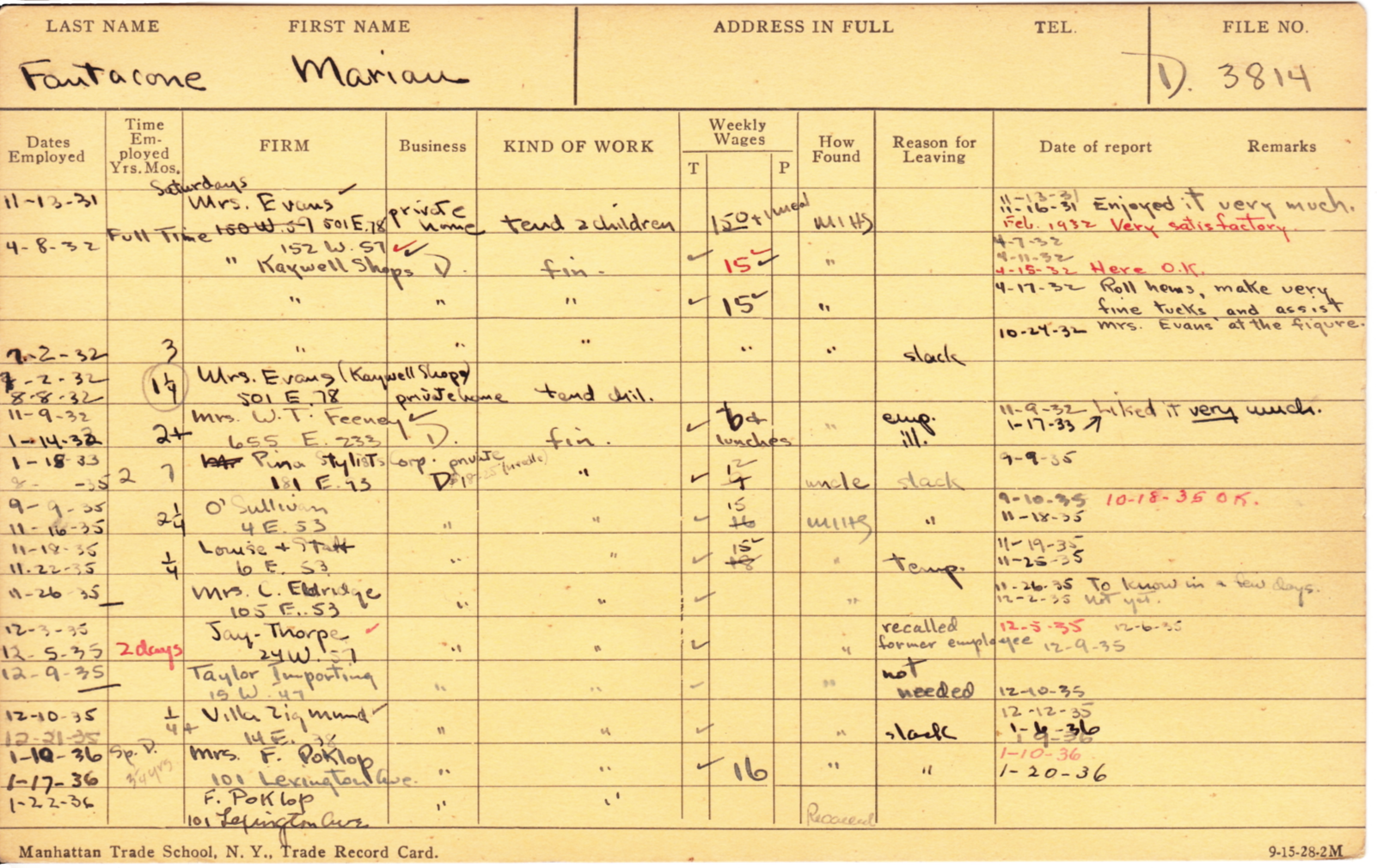
If you look at the job that Marian held from Nov. 19-22, 1935, you can see that her weekly wages were originally listed as $18 and then changed to $15. That was apparently a point of contention, as we can see on this next card:
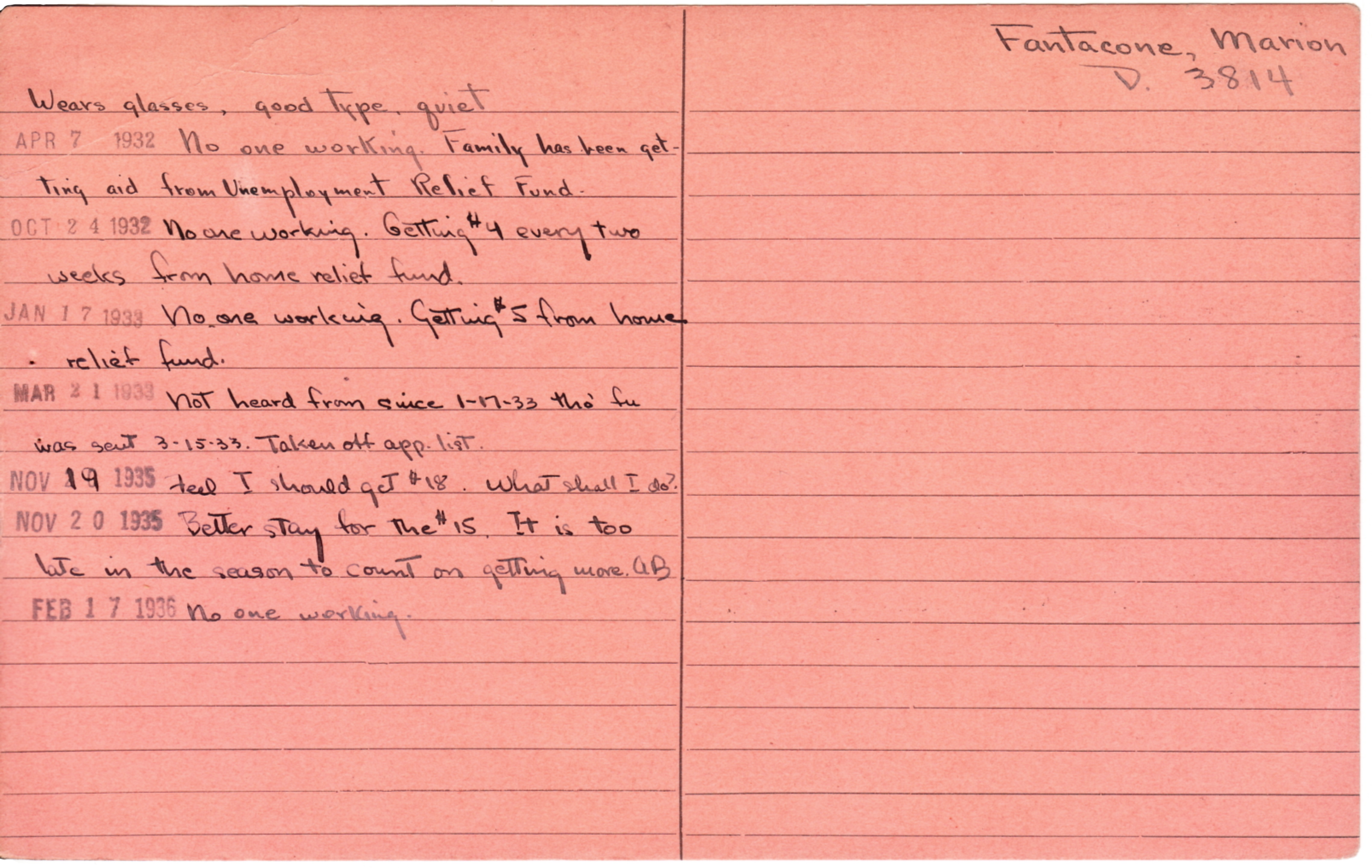
The key entries read like so:
Nov. 19, 1935 [comment from Marian]: Told I should get $18. What shall I do?
Nov. 20, 1935 [response from job placement secretary]: Better stay for the $15. It is too late in the season to count on getting more.
This exchange is characteristic of how such issues were typically handled. Whenever a student balked regarding pay levels or other work-related issues, the school almost always encouraged her to stick with the job, or to at least be patient.
That's all I have for Marian (or Marion, as the case may have been). If anyone knows more about her, please get in touch. Thanks.





